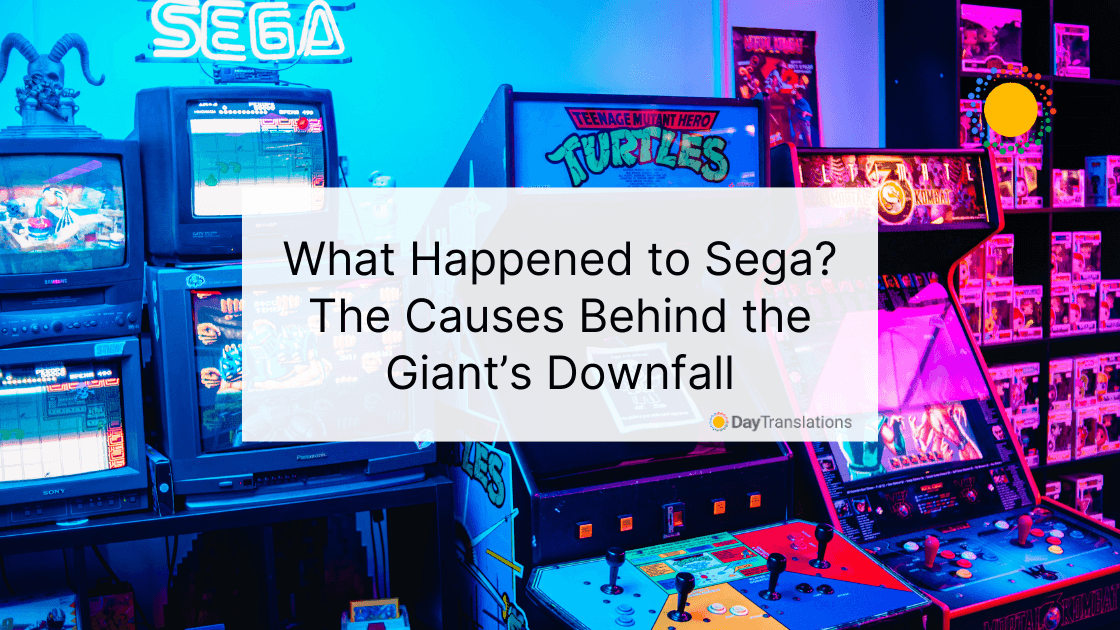Would you believe that Sega or the Sega Games Co., Ltd. was once an American company? Today it is labeled as a multinational video game developer and publisher from Japan, with headquarters in London and California managing its international branches, Sega Europe and Sega of America, respectively.
History of Sega
Sega is a shortened version of the original name of the company called Service Games that was based in Honolulu. The company was established in 1945 by Irving Bromberg, and his son, Martin Jerome Bromberg (who changed his name to Martin Bromley) in partnership with James L. Humpert. Their business is to manufacture and distribute coin-operated devices and slot machines mainly to U.S. personnel stations in Asia.
When slot machine operations on military bases within the U.S. territory were banned in 1951 by virtue of the Gambling Devices Transportation Act of the U.S. Congress, the company was forced to look for other markets. In 1952, Richard Stewart, a salesman for Service Games and a mechanic, Raymond Lemaire, were sent to Japan to explore the market. The trip led to the establishment of Service Games, Japan.
In just a few short years, factories to produce different types of coin-operated machines were established in South East Asia to cater to the U.S. military servicemen stationed in Asia. The company also aggressively marketed their products in Europe, thereby getting a major slice of the slot machine market.
Separation of Sega, Japan
Service Games, Japan was liquidated in 1960, splitting the company into two entities. Martin Bromley and Richard Stewart founded Nihon Goraku Bussan to handle Sega distribution, while another company, Nihon Kikai Seizo handled the manufacturing side of the business. Nihon Goraku Bussan was enjoying success as a major distributor of jukeboxes in Japan and released the Sega 1000 jukebox, its first original product.
Merger
Former American serviceman and businessman, David Rosen returned to Japan and started his own business, Rosen Enterprises, which was originally engaged in the art export business before discovering the viability of importing coin-operated photo machines from the United States. When Japan’s economy began to stabilize, Rosen imported electro-mechanical games from the U.S. and ventured into the arcade game business.
In the late 60s, Rosen Enterprises was acquired by Nihon Goraku Bussan, and he renamed their company as Sega Enterprises, Ltd. It also developed Periscope in 1966, its initial coin-operated game, which became an instant hit. Sega Enterprises saw the potential for additional revenue and continued the production of electro-mechanical arcade games. It later ventured into arcade gaming center operations around Japan.
Acquisition by Gulf+Western
On May 3, 1969, Sega Enterprises, Ltd. was acquired by Gulf+Western, allowing it to venture into other arenas. It started with importing pinball tables made in the United States. By 1972, Sega was manufacturing its own pinball tables, starting with the release of Winner.
Sega became an American company once again in 1974 after it offered stocks to the public. Sega Enterprises, Inc. became the head company, with Sega Enterprises, Ltd, remaining as a Japanese subsidiary.
Video game importation and development
In the early part of the 1970s, Atari was having so much success with the game Pong. Noting that it’s another revenue earner, Sega turned to video games, initially importing video games before developing them on their own, forming an alliance with Gremlin Industries. The company found success with games such as Zaxxon and Turbo. They also distributed Frogger in the U.S. In 1978, Sega was able to acquire Gremlin Industries and in 1982 became known as Sega Electronics.
Financial Difficulties for Gulf+Western
Sega Electronics was sold in 1983 by Gulf+Western to Bally Midway due to financial troubles. As there is so much potential for the Japanese arm of the company, it was bought from Bally Midway by a group formed by David Rosen, Hayao Nakayama and Isao Okawa in 1984.
Isao Okawa was the chairman of CSK Corporation, a Japanese company that produces software and offers IT services. With the buyout Sega became a CSK subsidiary, making Sega a Japanese company again.
Downturn in the Arcade Business
In the early 1980s, the mass appeal of arcade games suffered a downturn, which prompted Sega to venture into the development of video game consoles, targeting home consumers. It came out with the Master System, SC-3000 microcomputer and SG-1000. However, Sega faced stiff competition from competitors like the Nintendo Entertainment System, which became its biggest rival.
Video Game Consoles
By the time Sega released its video game consoles for the home, Nintendo Famicom already had a stranglehold in the market. Sega continued to stay afloat through its arcade games consoles. The company was able to release SC-3000 in New Zealand, Australia and some parts of Europe. They also made money in the toy market in Japan with the release of Robo Pitcher. They had a better break in the United States when they released the Sega Master System, competing directly with the Nintendo Entertainment System.
The U.S. release might not be a big hit but Sega Master System enjoyed huge success in other markets not penetrated by Nintendo, such as Brazil and Western Europe. It even edged out Atari Corporation and its console, Atari 7800. Finally, Sega managed to become the world’s second most popular home system.
Still a Master in Arcade Games
Sega was still the master when it comes to arcade games, releasing games such as After Burner, OutRun, Space Harrier and Hang-On. By 1987, Sega had 40,000 coin-operated machines used in 2,000 places worldwide.
In the game console business, Sega released the Sega Genesis, which is known as Mega Drive outside the U.S. in 1988, becoming a success in 1991 when Sonic the Hedgehog, the Sega mascot, was introduced into the market, even outselling the Super Nintendo Entertainment System briefly.
Sega still offers multi-million-selling game franchises such as Yakuza, Total War and the iconic Sonic the Hedgehog. It likewise remains strong in arcade game production and continues to operate several amusement arcades. It is into the production of various types of products for entertainment such as the Sega Toys.
Failure in Game Consoles
The succeeding game consoles released by Sega, such as the 32X, Sega Saturn as well as the Dreamcast games consoles all suffered commercial failures. They failed to upset the reigning game console giant, Nintendo.
Because of the major financial losses, Sega announced in 2001 that it would stop production of game consoles. Instead, the company will concentrate on being a third party game developer and publisher.
In 2004, Sega was acquired by Sammy Corporation, a Japanese company that develops and sells pachinko and pachislot systems for the Japanese and South Korean markets.
Video Game Creation and Production
Although Sega failed to take off like Nintendo, it still is a brand that is known in many parts of the world primarily because the name is synonymous with arcade games Still, Sega is now busy creating video games for different platforms, including Nintendo, Game Boy, PlayStation, Xbox 360, Wii, Windows and its own game consoles.
Sega’s published games include:
- After Burner
- Alex Kidd
- Altered Beast
- Bayonetta
- Beyond Oasis
- Blazing Heroes
- Bug!
- Border Break
- Clockwork Knight
- Columns
- Condemned
- Crazy Taxi
- Daytona USA
- Derby Owners Club
- Dinosaur King
Several more games released by Sega
- Fantasy Zone
- Football Manager
- Ghost Squad
- Hero Bank
- House of the Dead
- Let’s Go
- Out Run
- Shining
- Valkyria
- Herzog and Thunderforce series (games from Technosoft)
When Sega started, it was a very viable company, but it wanted more and rash decisions made the company fumble. When it ventured into the development of video games, many criticized it for focusing on quantity instead of quality. It still holds a place in the entertainment industry and the video game industry, despite its failure to become a top video game console producer as well as a video game creator and publisher. Sega remains profitable, despite the odds.
Take Your Video Games to the Next Level
Sega’s problems arose from rash corporate decisions. However, as a producer and publisher of video games, it can create more traction with players around the world with localization. Video game localization is the next step to gain worldwide success, because it allows gamers to play games in their own language. For example, Baraksha, a Hebrew speaking gamer and hacker took it upon himself to localize Sonic the Hedgehog into Hebrew. He and his team localized everything, including the Sega logo in the splash screen.
Get the Right Help for Localization – Contact Us!
Translating and localizing video games is one of the most difficult translation projects a language company can undertake. Thus, if you want to take your video game to the international market, you should be thinking of localizing it and working with the right language translation company. Day Translations, Inc. is a professional language services provider that works only with native speakers. Our subject matter experts, who can help localize your video games live in-country, assuring you of the most accurate translation services. Give us a call anytime, as we are open 24/7, 365 days of the year. You can get in touch with us by calling 1-800-969-6853 or sending us an email at Contact us.
Image Copyright: 空練 [CC BY-SA 3.0], via Wikimedia Commons












Sorry, the comment form is closed at this time.